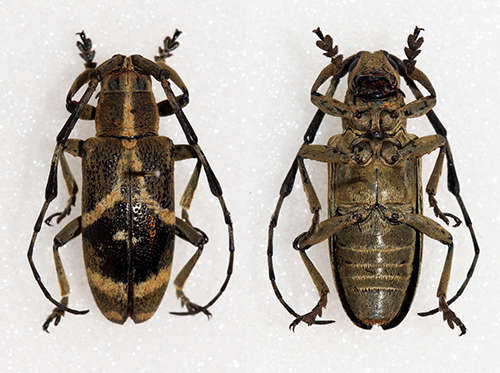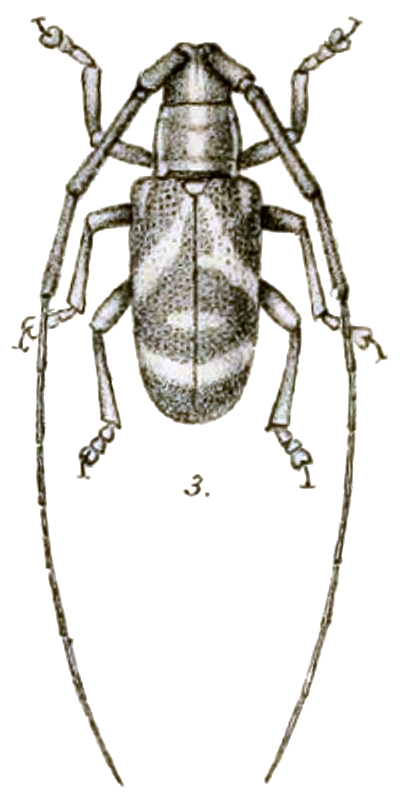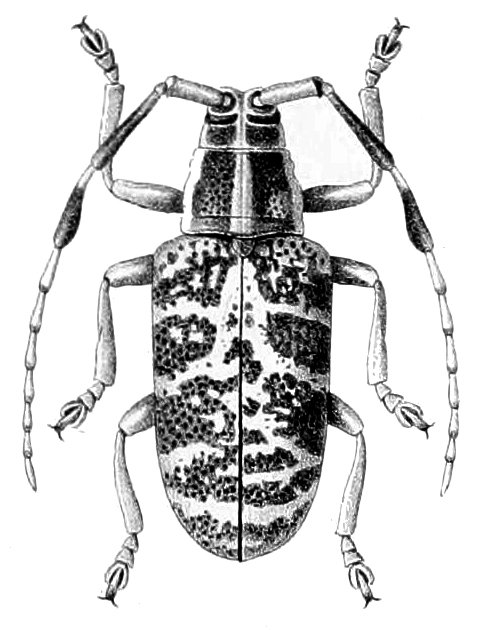| T O P I C R E V I E W |
| Bennyboymothman |
Posted - 15/12/2014 : 23:55:46

223.13 KB
Hi all.
Struggling with this one
Similiar to these specimens perhaps?
http://longicorn.okoshi-yasu.net/d%20cerambycidae%20sp102.html
Data: 06-2014 -Brookes Point - Palawan Island - Philippines |
| 15 L A T E S T R E P L I E S (Newest First) |
| Bennyboymothman |
Posted - 11/11/2015 : 23:49:48
Thank you very much. |
| Xavier |
Posted - 03/11/2015 : 15:24:27
It is now Marmaroglypha pubescens (Aurivillius, 1897) nov. comb. established in VIVES, 2015. New or interesting Cerambycidae from the Philippines 12. BOLETÍN DE LA SOCIEDAD ENTOMOLÓGICA ARAGONESA · JUNE 2015 |
| Bennyboymothman |
Posted - 10/01/2015 : 19:14:25
Hi Francesco, thanks for clarifying that.
I am a bit of a newbie to all of this as it shows.
Do any of the other members live in Sweden, or do you have any contacts that have access to that collection?
Thanks
Ben |
| Francesco |
Posted - 10/01/2015 : 15:53:43
No, it is not a paratype: the types are only the specimens mentioned in the original description.
The holotype is preserved in the Naturhistoriska Riksmuseet of Stockholm. |
| Bennyboymothman |
Posted - 10/01/2015 : 14:00:59
O I see, so this (the Female) is the Paratype I assume? Unless someone else has one tucked in their collection somewhere!
Have you any idea which collection the Male is in? I would love to get my hands on a photo of the specimen.
Regards
Ben |
| Francesco |
Posted - 09/01/2015 : 10:08:14
The holotype is not a female: it is only the male represented in this drawing (from Palawan).
The species was also recorded from Puerto Pricesa (Palawan) by Heller (1916, Philippinische Käfer, gesammelt von Prof. C. Fuller-Baker, Los Baños. Deutsche entomologische Zeitschrift 1916 (3-4): 269-311), here.
I read that already Heller noticed this abnormal antennomere and suggested the belonging to Marmaroglypha.
Maybe Agnia and Marmaroglypha should be synonymised. |
| Bennyboymothman |
Posted - 09/01/2015 : 08:29:11
This is highly unusual of the genus Agnia, as you say none of the Females of other species have these antennal lobes on the third segment.
We need to dig deeper and perhaps find the holotype of the Female.
Thanks
Ben |
| Francesco |
Posted - 07/01/2015 : 21:40:27
I am (un)happy to announce that it is a female Agnia pubescens.
However, this female has not been described at least until 1944 and I do not know whether it has ever been described.
It does not seem to me that the antennal character is present in other females of Agnia.
If you have intention to describe it, I leave the topic in this section.
|
| Bennyboymothman |
Posted - 07/01/2015 : 13:06:29
I am happy to announce that it is a Female. |
| Bennyboymothman |
Posted - 06/01/2015 : 22:20:29
Thanks, specimen is relaxing now, I will check it out tomorrow. |
| Francesco |
Posted - 04/01/2015 : 18:44:05
You should hydrate the specimen, carefully open with a forceps the anal segments (cf. here) and observe inside.
If you individuate a pigmented small segment with rounded apex (genital segment), it is a male.
If you individuate a membranous yellow segment, apically straight, with or without two small yellowish articles (like palps) emerging from it, it is a female. |
| Bennyboymothman |
Posted - 04/01/2015 : 16:05:32
Sorry, can you tell me the best way to sex Cerambycidae other than antennae! I am very new to all this. Thanks
Ben |
| Francesco |
Posted - 04/01/2015 : 12:54:57
mmmhm.... it also seems the female of Agnia pubescens Aurivillius 1897, though I do not know whether the female has this strange antennomere IV.
Here the the original picture:

Agnia pubescens Aurivillius 1897, Fig. 3
Could you check the sex of your specimen? |
| Bennyboymothman |
Posted - 28/12/2014 : 14:36:02
Hi Francesco. Thanks for the extra info. The type specimen that you have posted does show similarities to the specimen that I have, but at the same time some differences. As far as my searching abilities can stretch this seems to be a poorly described genus?
Let me know if the specimen needs to be sent anywhere? For clarification and identification.
Regards.
Ben |
| Francesco |
Posted - 28/12/2014 : 12:28:17
This is the type-species of Marmaroglypha Redtenbacher, 1868.

Marmaroglypha nicobarica Redtenbacher, 1868
The genus is absent from the Philippines (new species?)
For the moment, I move this topic in the secret zone. |


